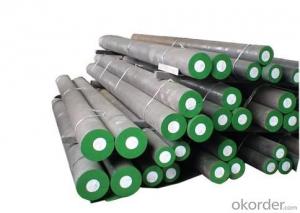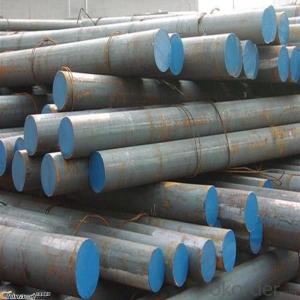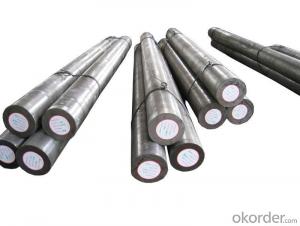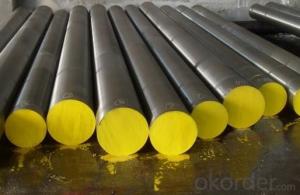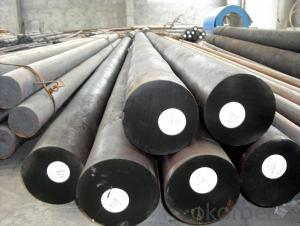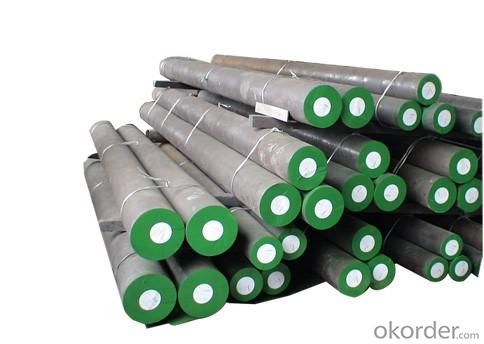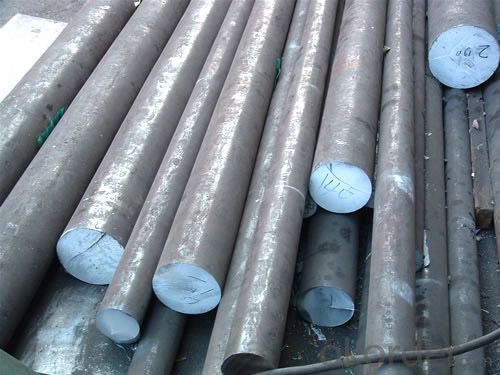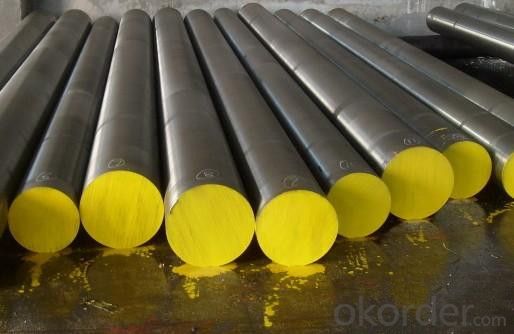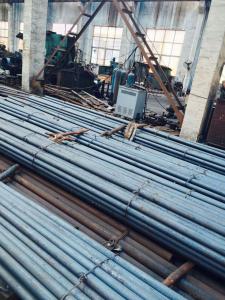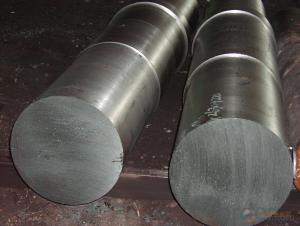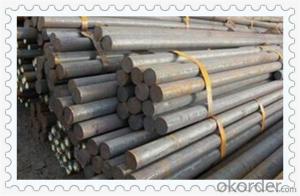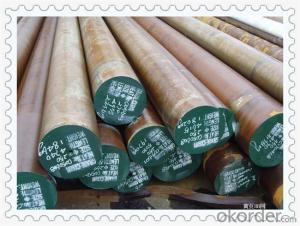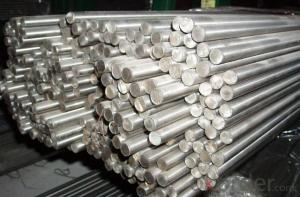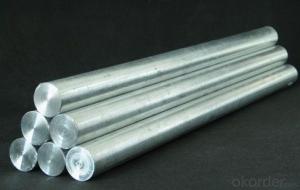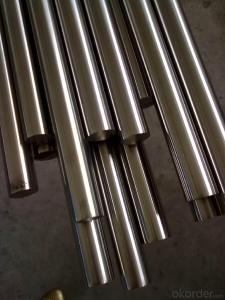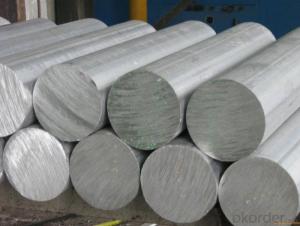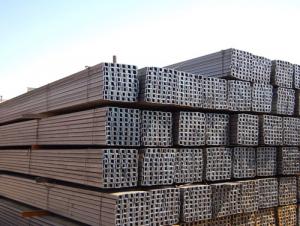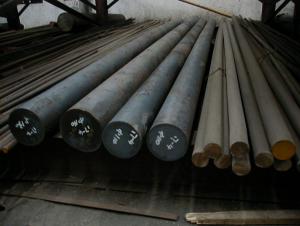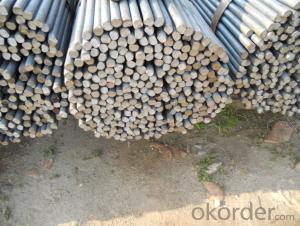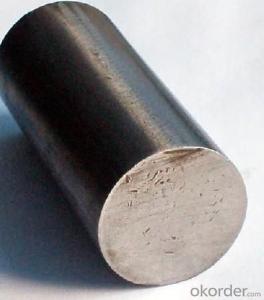1039 Alloy Steel Round Bar
- Loading Port:
- China main port
- Payment Terms:
- TT OR LC
- Min Order Qty:
- 5 m.t.
- Supply Capability:
- 100000 m.t./month
OKorder Service Pledge
OKorder Financial Service
You Might Also Like
Specification
1039 Alloy Steel Round Bar
1. Product Description
Item | 1039 Steel Bar,1039 Steel Rod,Carbon steel bar 1039, Carbon steel rod 1039,Alloy steel bar 1039,Alloy steel rod 1039, Alibaba best sellers 1039 alloy steel bar,1039 alloy steel round bar | |
Standard | GB,AISI,JIS,ASTM,EN,ASTM,etc | |
Material | 10#,S210C,S09CK,1010,C10E,15#,S15C,S15CK,1015,20#, S20C,S20CK,1020,C22,25#,S25C,1025,30#,S30C,1030,35#, S35C,1035,40#,S40C,1040,45#,S45C,1045,C45E,50#,S50C, 1050,55#,1055,60#,C60,20Mn,1022,25Mn,30Mn,40Mn,50Mn, 20Mn2,1320,30Mn2,1330,1335,1340,1033,1039etc | |
Shape | Round,Flat,Square,Angle,Hexagonal,etc | |
Surface | Black painted,Galvanized, | |
Dimension | Round bar | Diameter:4mm-800mm |
Angle bar | 3mm*20mm*20mm-12mm*800mm*800mm | |
Square bar | 4mm*4mm-100mm*100mm | |
Flat bar | Thickness:2mm-100mm | |
Width:10mm-500mm | ||
Hexagonal bar | 4mm-800mm | |
Length:2m,4m,5.8m,6m,11.8m,12m,or as required | ||
Price Term | EXW,CFR,FOB,CIF,etc | |
Payment Term | L/C,T/T,D/P,etc | |
Package | Standard seaworthy export package or as customer’s request. | |
Export To | Singapore,Bangladesh,Italy,India,Indonesia,Spain,Brazil,Iran, Peru,Chile,Slovenia,Cameroon,Thailand,Turkey,etc | |
Delivery Time | According to order’s quantity. | |
Application | Carbon steel rod applies to chemical industry,shipping industry, manufacturing industry,construction,decorate industry,electric power,pump shafts,sanitary wares,furniture handles,boiler,high temperature resistant,low temperature resistant,corrosion resistant. | |
Contact | My all info are below,please feel free to contact me. | |
2. Photo Show
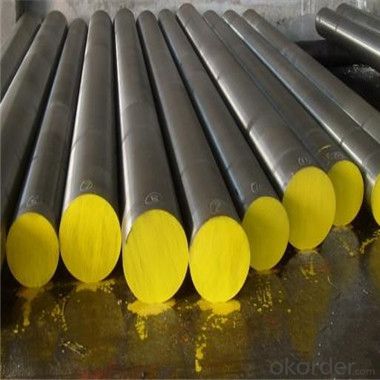

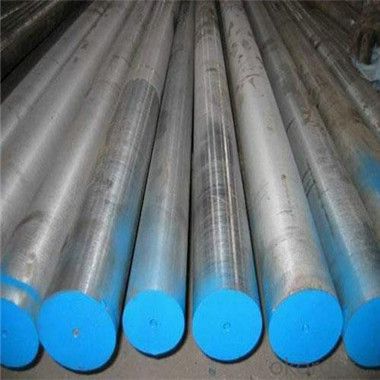
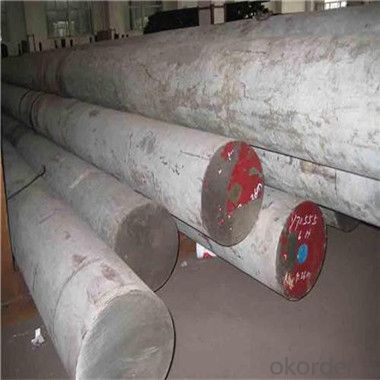
3. Chemical Composition
Item | C | Si | Mn | P ≤ | S ≤ |
1039 | 0.37-0.44 | 0.20-0.35 | 0.70-1.00 | 0.040 | 0.050 |
- Q: What are the different types of steel round bar sizes?
- Steel round bars come in a variety of sizes, each serving different purposes and applications. The most common sizes for steel round bars range from 1/8 inch to 24 inches in diameter. These sizes are typically measured in inches, with each increment representing a larger diameter. For smaller projects or more intricate designs, steel round bars ranging from 1/8 inch to 1 inch are often used. These smaller sizes are commonly found in jewelry making, crafting, and smaller construction projects. On the other hand, steel round bars ranging from 1 inch to 24 inches are utilized for larger-scale applications such as structural support, manufacturing, or industrial projects. These larger sizes provide enhanced strength and durability, making them suitable for heavy-duty use. It should be noted that steel round bars are also available in metric sizes, which are measured in millimeters. Metric sizes are commonly used in regions that follow the metric system, such as many countries in Europe and Asia. Choosing the appropriate size of steel round bar depends on the specific requirements of the project, including load-bearing capacity, structural integrity, and overall design. It is advisable to seek advice from an engineer or industry professional to determine the most suitable size for your particular application.
- Q: Can steel round bars be used in the production of musical equipment?
- Musical equipment production can indeed incorporate steel round bars. Steel, being a robust and long-lasting substance, is frequently employed in constructing diverse musical instruments. Structural features like frames, braces, and supports for guitars, drums, and pianos can all be fashioned from steel round bars. Furthermore, steel can be utilized to manufacture sound-enhancing components such as resonators or bellows in certain instruments. The adaptability and dependability of steel render it an appropriate selection for the production of musical equipment.
- Q: What are the common alloying elements used in steel round bars?
- The common alloying elements used in steel round bars are carbon, manganese, silicon, sulfur, and phosphorus. Carbon is the most important alloying element and is responsible for the strength and hardness of the steel. It enhances the overall performance and makes the steel more durable and resistant to wear and tear. Manganese is another crucial element that improves the hardenability and strength of the steel. It also helps in reducing the brittleness and increasing the toughness of the material. Silicon is added to enhance the steel's resistance to oxidation, while sulfur and phosphorus are added in small amounts to improve machinability. These alloying elements work together to create steel round bars with specific properties suitable for various applications in industries such as construction, automotive, and manufacturing.
- Q: Can steel round bars be used for making musical instruments?
- Musical instruments can indeed be made using steel round bars. Steel is an incredibly versatile material, known for its outstanding strength and durability. This makes it highly suitable for a wide range of applications, including the creation of musical instruments. Steel round bars can be utilized in the fabrication of various musical instrument components, such as strings, rods, and even the principal body of certain instruments. The precise type and grade of steel utilized will ultimately depend on the specific instrument and the desired sound quality. For instance, steel bars are commonly employed in percussion instruments like xylophones or vibraphones, as they generate diverse pitches and tones. Furthermore, steel round bars can be employed in the production of components for wind instruments, including saxophones and trumpets. Nevertheless, it is important to note that selecting the appropriate material for musical instruments is often a complex process. Factors such as resonance, tonal quality, and playability must all be carefully considered. While steel round bars can be utilized, other materials like brass, wood, or even synthetic substances may be preferred for certain instruments in order to achieve the desired sound characteristics.
- Q: Is round steel bar round steel?
- NoRound steel bars refer to hot rolled round steel bars for reinforced concrete. Round bars include high-quality carbon structural steel, round steel, ordinary carbon structural steel round bars, steel bars for prestressed concrete, etc.. Although the shape is round, but the material is different, so steel and round bar is two yards.
- Q: What are the advantages of using zinc-alloy steel round bars?
- Zinc-alloy steel round bars offer numerous benefits: 1. Enhanced corrosion resistance: The application of a zinc layer to these bars forms a protective barrier against corrosion, ensuring longevity and durability. As a result, they are highly resistant to rust and other types of corrosion. 2. Increased strength and durability: Zinc-alloy steel is renowned for its exceptional strength and durability. The zinc coating strengthens the steel's structure, enabling it to withstand heavy loads and high-stress conditions. Consequently, zinc-alloy steel round bars are ideal for applications that require reliability and strength. 3. Cost-effective solution: Compared to other materials that resist corrosion, zinc-alloy steel round bars are a cost-effective option. The zinc coating provides a more affordable alternative to pricey metals like stainless steel, offering comparable corrosion resistance and strength. 4. Versatility and ease of fabrication: Zinc-alloy steel round bars are incredibly versatile as they can be easily shaped and resized to suit various applications. They can be cut, bent, welded, and machined to meet specific requirements, making them suitable for use in the construction, automotive, industrial, and other sectors. 5. Aesthetically pleasing: The shiny and smooth zinc coating of zinc-alloy steel round bars enhances their visual appeal. Consequently, they are well-suited for applications where aesthetics play a crucial role, such as architectural designs or decorative elements. 6. Environmental sustainability: Zinc is a highly recyclable material, and the utilization of zinc-alloy steel round bars promotes environmental sustainability. By recycling these bars at the end of their lifespan, the demand for new raw materials is reduced, thereby minimizing waste generation. In conclusion, zinc-alloy steel round bars offer a range of advantages, including corrosion resistance, strength, cost-effectiveness, versatility, aesthetic appeal, and environmental sustainability. These qualities make them highly desirable for diverse industries and applications.
- Q: What is the difference between cast iron and round steel?
- Cast iron is composed of iron ore by crushing and grinding into powder, into the furnace after high temperature calcination into liquid (commonly known as iron) and then poured into the special mould after cooling into ingot is also called billet or iron, iron is the main component of alloy is composed of iron, carbon and silicon.
- Q: Do you need paint for roof lightning proof steel bars?
- If the metal surface is coated with a thick layer of insulating paint, it will seriously affect the flashover effect. In the national standard, the metal roof is directly used as a flash receiver. The thickness of the paint used on the roof must be less than the required value. That is what it means.
- Q: What is the difference between a hot rolled and a precision ground steel round bar?
- The manufacturing processes and resulting surface finishes of a hot rolled steel round bar and a precision ground steel round bar are the primary factors that differentiate them. Hot rolled steel round bars are created by heating the steel billet or ingot to high temperatures and passing it through a series of rollers to achieve the desired shape and size. This method yields a rougher surface finish with visible mill-scale or oxide layers. Additionally, the hot rolling process allows for variations in size and shape, making it a cost-effective choice for producing steel round bars in large quantities. On the other hand, precision ground steel round bars undergo a more refined and controlled manufacturing process. After the initial hot rolling, the bar is ground to achieve a smooth and consistent surface finish. Precision grinding eliminates the mill-scale and oxide layers, resulting in a more polished appearance. This process also ensures tight dimensional tolerance and improved straightness of the round bar. The selection between a hot rolled and a precision ground steel round bar depends on the specific application requirements. Hot rolled round bars are commonly used in applications where surface finish is not crucial, such as structural components, machinery parts, or construction materials. In contrast, precision ground steel round bars are employed in applications that demand a smooth surface finish, precise dimensions, and tight tolerances, such as in the production of precision tools, machinery components, or in industries like aerospace or automotive. In conclusion, the key distinction between a hot rolled and a precision ground steel round bar lies in their manufacturing processes and resulting surface finishes. Hot rolled round bars offer cost-effectiveness and versatility, while precision ground round bars provide a smoother surface finish, tighter tolerances, and improved dimensional accuracy for more demanding applications.
- Q: What is the difference between a rough turned and a precision ground steel round bar?
- A rough turned steel round bar refers to a steel bar that has undergone a rough machining process to remove excess material and bring the bar to a closer approximation of its final dimensions. This process typically involves removing the outer layer of the bar through turning or other machining methods. However, the bar is not yet finished to precise tolerances and may still have slight variations in diameter or surface roughness. On the other hand, a precision ground steel round bar has undergone a secondary machining process known as grinding. Grinding is a more precise and controlled method of removing material from the surface of the bar. It involves using a grinding wheel or abrasive tool to carefully remove small amounts of material, resulting in a bar with highly precise dimensions and a smoother surface finish. Precision ground bars are typically made to meet specific tolerances and have a more consistent diameter, surface finish, and straightness compared to rough turned bars. The main difference between a rough turned and a precision ground steel round bar is the level of precision and surface finish achieved. Rough turned bars are suitable for applications where tight tolerances and surface finish are not critical, such as in certain structural or machinery components. Precision ground bars, on the other hand, are preferred when precise dimensions, tight tolerances, and a smooth surface finish are required, such as in precision machining applications or where the bar will be used as a shaft or component in critical machinery or equipment.
Send your message to us
1039 Alloy Steel Round Bar
- Loading Port:
- China main port
- Payment Terms:
- TT OR LC
- Min Order Qty:
- 5 m.t.
- Supply Capability:
- 100000 m.t./month
OKorder Service Pledge
OKorder Financial Service
Similar products
Hot products
Hot Searches
Related keywords
